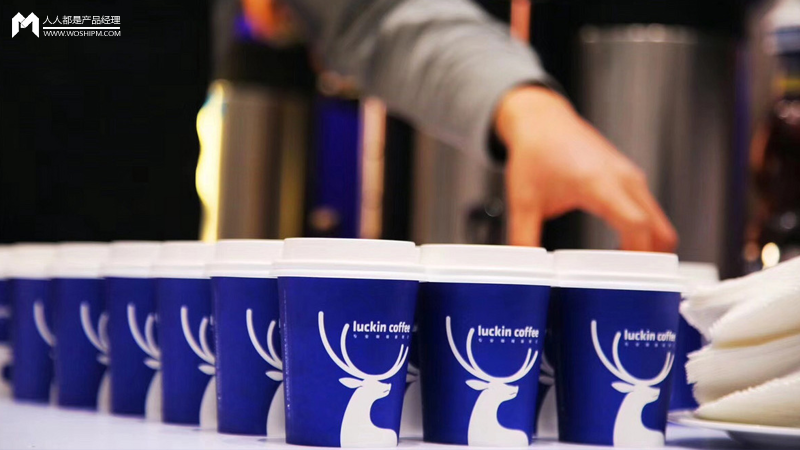Coca-Cola spends $5.1 billion into the coffee industry! Starbucks is really in a hurry!

Professional coffee knowledge exchange more coffee bean information please follow the coffee workshop (Wechat official account cafe_style)
In this world, there is no immutable industry, let alone an enduring giant!
At present, the pattern of the coffee market is undergoing great changes in the fierce competition.
British hotel and catering giant Whitbread announced on its website that US beverage maker Coca-Cola 's acquisition of British coffee chain Costa has been approved by shareholders of Costa's parent company, Whitbread, Pennsylvania News reported.

(voting status of Whitberry shareholders)
After the news came out, some netizens joked that Coca-Cola was going to open nearly 4000 coffee shops overnight.
However, Coca-Cola is "wayward", but Starbucks is probably in a hurry.
As one of the best brands in the world, there is no doubt about the strength of Coca-Cola.
Come to think of it, with its help, the future Costa has the capital to compete with the former in terms of financial resources and resources.
There is no doubt that Starbucks has another strong opponent!
(I)
Why did Coca-Cola come to spoil the coffee market?
With the upgrading of consumption level, people pay more and more attention to a healthy diet.
In homeopathy, carbonated drinks have also been labeled as "high in sugar and high in calories" and become one of the synonyms for unhealthy drinks.
This shift is also profoundly reflected in Coca-Cola's performance.
Coca-Cola's revenue has fallen for the fifth year in a row since peaking at $48 billion in 2012.
According to the 2017 annual report, Coca-Cola's annual net income was $35.41 billion, down 15% from a year earlier, while operating profit was $7.501 billion, down 13% from a year earlier. Revenue and net profit fell off a cliff.
In order to break through the business bottleneck, Coca-Cola has to embark on the road of transformation.
The first thing to bear the brunt is to make a fuss on the decarbonization of cola.
Coca-Cola has successively launched Diet Coke, Zero Coke, Green Coca-Cola, Zero Sugar Coke and other products, but the results are not satisfactory.
As a result, Coca-Cola began to rely heavily on buying, trying to find new profit growth points through new brands.
Relevant data show that from 2013 to 2017, Coca-Cola acquired or acquired shares in coconut water brand Zico, cold-pressed fruit juice brand Suja Life LLC, Mexican sparkling water brand Topo Chico and so on.
In the beverage industry, the prospect of the coffee market has always been more attractive.
James Quincy, president and CEO of Coca-Cola, once said: "Coffee is one of the fastest growing beverage categories in the world, with a growth rate of 6 per cent. It is also a category with many different elements, from vending machines to coffee shops, from roasted coffee beans to capsule coffee. "
Costa, founded in London in 1978, is the second largest coffee chain in the world after Starbucks.
According to public information, Costa currently has more than 2400 stores in the UK and 1399 stores in the rest of the world's 31 overseas markets, including more than 400 in China.
Obviously, by directly winning Costa, Coca-Cola instantly has a huge coffee business platform around the world and a mature coffee industry supply chain, getting a favorable card for its layout in hot drinks.
(2)
Of course, for Costa, being acquired by Coca-Cola is also a good thing.
Compared with Starbucks' rapid "pioneering", Costa always seems to be a step behind in the competition.
Especially for the layout of overseas markets. When Starbucks announced its entry into the Chinese market in 1999, Costa opened its first overseas store in Dubai. It was not until 2007 that Costa opened its first Chinese store in Shanghai.
I am afraid that such a Costa has never been regarded as a "threat" by Starbucks!
However, the arrival of Coca-Cola has changed things.
Because of the protection of the former tree, the future Costa has the capital to compete with Starbucks in terms of financial resources and resources.
Not only that, Starbucks faces a challenge from Internet coffee brand Ruixing in the Chinese market, which is most valued by Starbucks.
The latter specializes in coffee takeout, so that more and more Chinese people are no longer so keen to buy coffee in stores, which has put a lot of pressure on Starbucks.
According to recent results, Starbucks' same-store sales in china fell by 2% in the third quarter of 2018, compared with an unusually significant 4% increase in the previous quarter.
In addition, Starbucks' operating margin in China fell 7.6 percentage points to 19% during the reporting period.
As we all know, the decline in gross profit margin means higher costs and lower profits. In many cases, the sharp decline in gross profit margin is one of the signs that enterprises are gradually moving towards decline.
Obviously Starbucks can no longer rest easy!

(photo source: picture worm)
In this era of change and uncertainty become the norm, no kind of competitiveness is eternal.
At the moment, this sentence is perfect for Starbucks.
There is luck on the left and the passive situation of Costa on the right, so it must make positive changes, otherwise the hegemonic position that has been maintained for many years may really be "broken"!
END
Important Notice :
前街咖啡 FrontStreet Coffee has moved to new addredd:
FrontStreet Coffee Address: 315,Donghua East Road,GuangZhou
Tel:020 38364473
- Prev

Coffee shop operation | to increase the profit of the coffee shop, the price of the coffee shop or not?
For example, in an era when many costs are rising, should cafes raise prices if they want to survive? As a matter of fact, there is a cost to open a shop every day: Labor expenses, rent, electricity and electricity are all fixed expenses. As the operator of an independent coffee shop, the sale does not depend on the price, but entirely depends on the value. How to make use of the difference in quality to improve the profit of the coffee shop? First of all, according to our actual situation
- Next

Luckin Coffee entered nearly 100 stores in 7 major cities and opened on the same day. The total number of stores in the country has exceeded 1300.
Professional coffee knowledge exchange more coffee bean information Please follow the coffee workshop (Wechat official account cafe_style) Today, Luckin Coffee officially settled in Dalian, Qingdao, Changsha, Zhengzhou, Ningbo, Wuxi and Suzhou, with nearly 100 stores open at the same time. This also means that after 14 cities, including Beijing, Shanghai, Guangzhou and Shenzhen, Luckin Coffee has been stationed in 21 cities across the country. Lucky
Related
- What brand of black coffee is the most authentic and delicious? what are the characteristics of the flavor of the authentic Rose Summer Black Coffee?
- Introduction to the principle and characteristics of the correct use of mocha pot A detailed course of mocha pot brewing coffee is described in five steps.
- Which is better, decaf or regular coffee? how is decaf made?
- How much is a bag of four cat coffee?
- How about four Cat Coffee or Nestle Coffee? why is it a cheap scam?
- Which is better, Yunnan four Cats Coffee or Nestle Coffee? How about cat coffee? is it a fake scam? why is it so cheap?
- How about Cat Coffee? what grade is a hoax? which instant coffee tastes better, four Cat Coffee, Nestle Coffee or G7 coffee?
- Process flow chart of coffee making-Starbucks coffee making process what coffee tastes good at Starbucks
- The top ten best coffee beans in the world Rose summer coffee or Tanzanian coffee tastes good
- Yunnan four cat coffee is good to drink?_four cat coffee is a big brand? four cat blue mountain coffee is fake?

